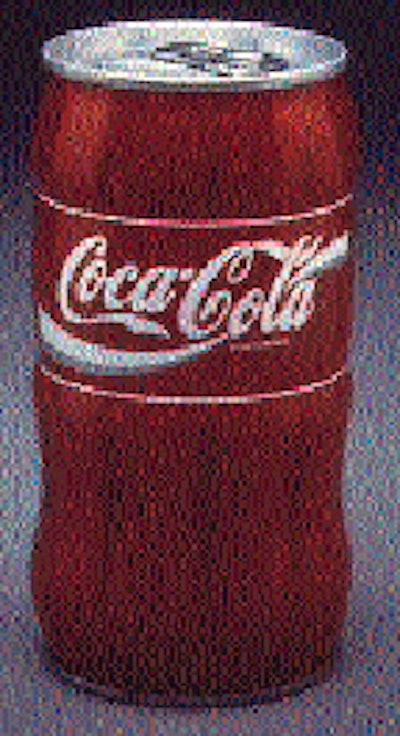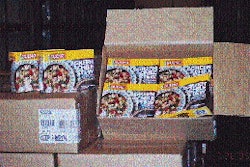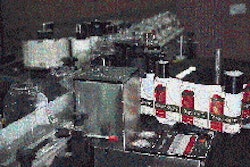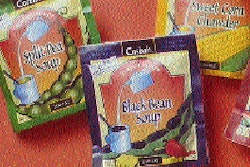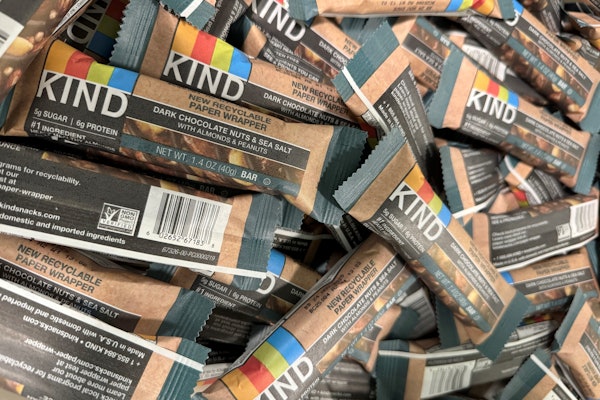(Chicago, IL). Sales of Coke's various brands in supermarkets were up too - 2.3% by IRI's count. And that was before the triple digit temperatures of late July and August began to cheer the bottlers. Soft drink makers, like farmers, are happy to accept bumper crops brought on by weather over which they have no control. But this year, the Coca-Cola Co. is even more pleased by the sales impact of its decision to replace 20-oz stock PET bottles with a contour design reminiscent of its classic "hobble skirt" glass bottle. "Of 44 markets where the contour bottle has been available for over a year, we are averaging a 46% lift over the [straight-walled] bottle it replaced," a company official tells us. Roll-out of the shaped PET bottle has been underway for about two years. It's now available in 90% of the U.S. market. Considering the reception the 20-oz contour PET bottle has been receiving, it's not surprising that one-, two- and three-liter contour PET bottles are also being evaluated as part of the "proprietary packaging strategy" adopted by the company in 1992. The next phase in Coke's strategy is the evaluation of shaped cans. We're not apt to see a contour Coke can roll-out in the states for at least two years, but the company is working on the idea. Coke is evaluating at least three different shaped can designs-and probably several more. In Germany, where consumers are already familiar with uniquely shaped cans for ground coffee, vegetable oils and other foods, Coke put a contour three-piece steel can in consumers' hands...and got a positive feedback. The 330-ml can, formed to resemble a classic Coke bottle without a neck (see photo), incorporated an aluminum 206 end with a nondetachable easy-open tab. Coke isn't saying much about its quest for a shaped can, but one insider admits a steel body was used for the German three-piece contour can test because "at this point, we're not satisfied with the technology of aluminum for such a can." An aluminum version, however, is being worked on. Last March, a two-piece contour Coke can was designed, patented and assigned to the Coca-Cola Co., in a collaboration of its engineers and KornickLindsay (Chicago, IL). If Coke isn't saying much about its search for a shaped can, Joseph M. Kornick, principal of KornickLindsay, won't even admit that the patent for an "ornamental design for a can body" is for a two-piece can. One of Kornick's shaped can design objectives was to develop some "far-out" concepts as well as some "closer in" ideas for Coke. One of the "close-in" shaped can designs, a "dynamic ribbon" can, Kornick calls it (see photo, page 143), is undergoing limited retail market tests in Canada. This two-piece aluminum can incorporates a series of vertical flutes in the shape of Coke's signature wave debossed vertically around its walls. Other ideas, including bringing back PET cans (but this time with curved profiles), are being discussed as part of Coke's quest for distinctive container shapes that appeal to consumers. Beyond contoured cans In fact, we wouldn't be surprised to learn that Coca-Cola is thinking about putting its cola in bottle-shaped flexible pouches. That's not really as far fetched as it first sounds. For one thing, we see that metallized plastic balloons can be made in almost any shape these days. This summer we saw Batman and Robin balloons in our local supermarket - complete with inflatable capes! Making balloons shaped like Coke bottles would be no big trick. Making balloons that could hold Coke and stand upright might be a little trickier. But, by no means would it be impossible. In fact, if Coke liked the idea of balloons of Coke (and, after all, what are today's ultra-thinwalled aluminum beverage cans, if not balloons filled with carbonated drinks?), it wouldn't even be the first time carbonated beverages were marketed in pouches. Twenty or thirty years ago, British consumers were able to buy a variety of carbonated soft drinks in polyester film pouches. Those sausage-like flexible drink packs had only a minimal amount of shaping, thanks to stiff paper "belly-band" labels that kept them from swelling in the middle. Beyond the margins of the belly bands, pouch ends flared out like plump pillows. One end incorporated an easy-opening flap. ICI developed the drink pouches and the form/fill/seal equipment to make them. The equipment was slow. And, after making a dramatic splash in England's Tyne Tees region, they disappeared. We haven't heard of them since. Like so many packaging innovations that were ahead of their times, carbonated drink pouches debuted long before the requisite technology and marketplace appeal needed to assure their success. Packaging material and machinery technologies have advanced significantly in the last two or three decades. In fact, earlier this year, Danish entrepreneur Lucjan Hunger received an international patent (WO 95/13224) for his BagBottle, a stand-up pouch that's "suitable for carbonated liquids," among other things. Hunger, whose concept includes a variety of closure and dispensing designs, is currently looking for licensees and investors to transform his idea into reality. So, if Coke wanted to, they could probably assess the consumer appeal and production cost of putting "the Real Thing" in "Mae West" pouches today without much of a packaging technology strain. Reading trends in machinery shipments Shipment data on 18 packaging machinery categories collected for the Packaging Machinery Manufacturers Institute (Arlington, VA) by Industrial Research Associates (Madison, CT) provide an interesting perspective on U.S. packaging market trends. While we don't have any emerging market data against which to compare these figures, they do seem to reflect the activities one would expect from a mature market. Material handling units and coding devices top the list. That suggests that packagers are still buying individual machines, not complete lines. Without the conveyors and material handling equipment to act as interchanges, packaging machines are just so many unconnected highways. It also suggests that packaging lines are increasingly being pressed into doing more than what they were originally purchased to do. The sale of coding equipment, coupled with the figures for multipacking units and case/tray forming/loading machines, reflects, perhaps, the effect ECR programs are having on consumer goods packaging lines. Secondly, the fact that coding units, a class of relatively inexpensive equipment, rank second in terms of shipments can be interpreted to show that today, coding/marking units outsell all other machinery types.
